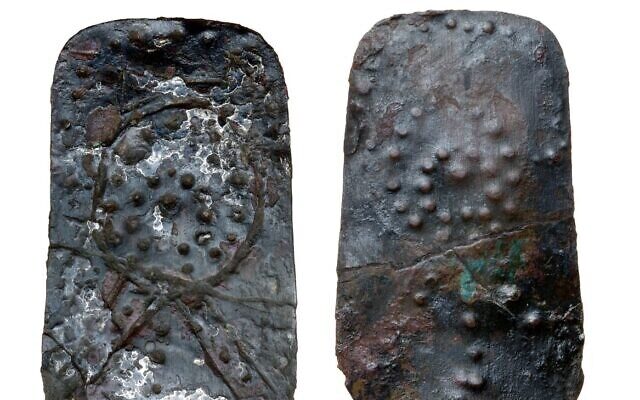
Yosef Garfinkel, an archaeology professor at Hebrew University of Jerusalem, wrote in the academic journal Antiquity that the scepter, which was made from bronze and coated in silver, was discovered inside the cellar of a Canaanite temple at Lachish.
He linked the scepter, which looks like a spatula, to a scepter found at Hatzor in the north, as well as to a small figurine found at the site of a Canaanite temple at Meggido.
In the hand of the figurine is a specter which Garkinfel called a "miniature version" of those found at Lachish and Hatzor. He also noted the scepter from Meggido has a complex pattern of circles hammered into it, the Haaretz daily reported, similar to the scepter from Lachish.
Based on these similarities, Garfinkel said the scepter from Lachish was likely once held in the hand of a life-sized statue there.
"The scepters from Lachish, Hazor and Megiddo can be considered characteristic attributes of the Canaanite god El. The scepter was the emblem of this god, an identifying marker and symbol of his power," he wrote in the article.
Garkinfel added "this raises the question of whether the scepter became powerful because it was held by the god, or whether the god received his powers from the scepter," noting the pattern on the scepter "may have held its own symbolic meaning."
He also pointed out that Moses performed miracles using "the staff of God," suggesting a Biblical connection.
While the use of life-sized divine statues in the region is mentioned in historical sources, Garfinkel said no statues had yet been found in the region. He said this paucity may be due to many of the statues made from perishable materials such as wood or textiles, causing them to deteriorate over time.





Comment: See also: